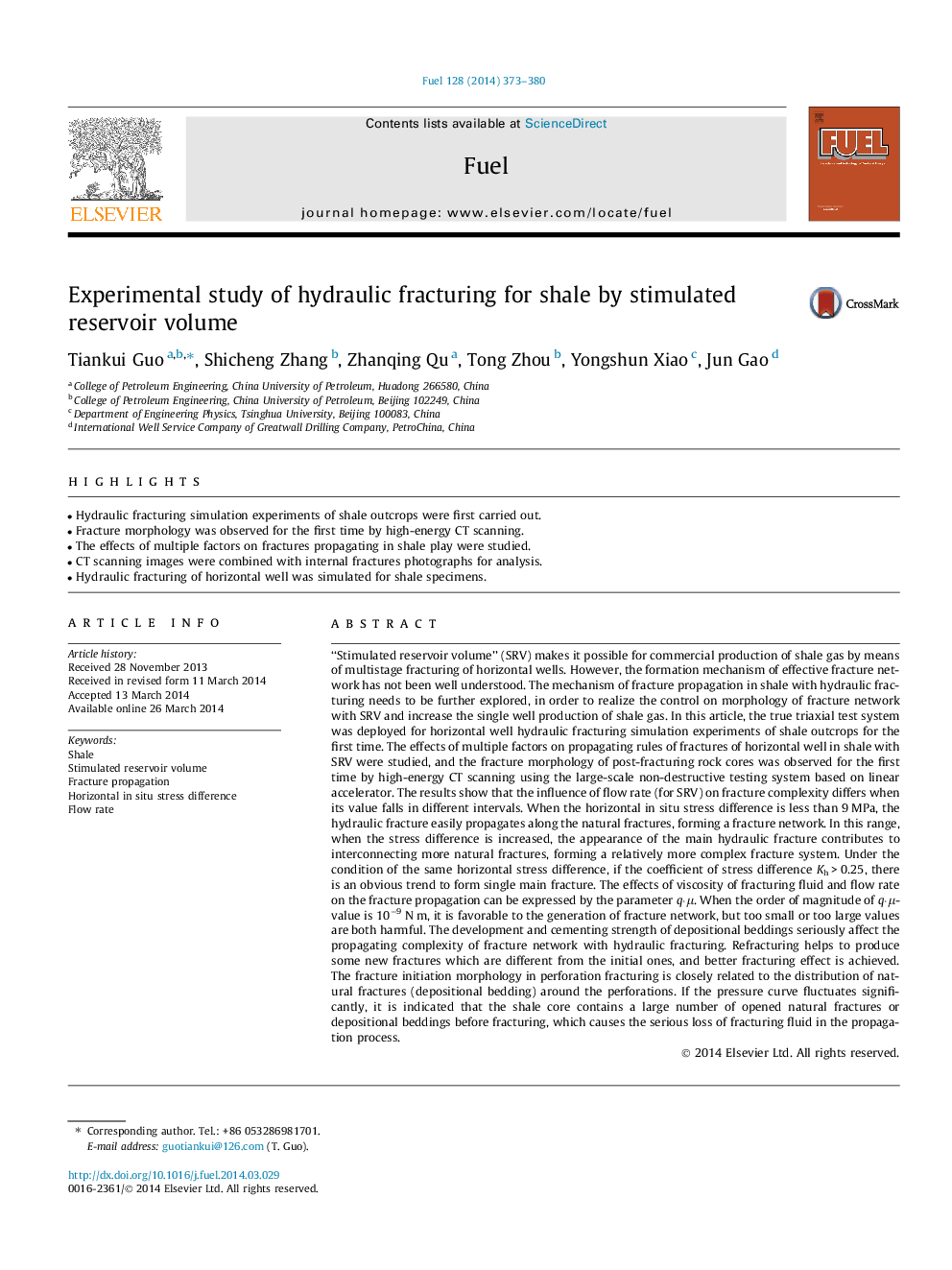| کد مقاله | کد نشریه | سال انتشار | مقاله انگلیسی | نسخه تمام متن |
|---|---|---|---|---|
| 6637650 | 461154 | 2014 | 8 صفحه PDF | دانلود رایگان |
عنوان انگلیسی مقاله ISI
Experimental study of hydraulic fracturing for shale by stimulated reservoir volume
ترجمه فارسی عنوان
بررسی تجربی شکستن هیدرولیکی شیل با حجم مخزن تحریک شده
دانلود مقاله + سفارش ترجمه
دانلود مقاله ISI انگلیسی
رایگان برای ایرانیان
کلمات کلیدی
شیل، حجم مخزن تحریک شده، پخش شکستگی، تفاوت افقی درون استرس، نرخ جریان،
موضوعات مرتبط
مهندسی و علوم پایه
مهندسی شیمی
مهندسی شیمی (عمومی)
چکیده انگلیسی
“Stimulated reservoir volume” (SRV) makes it possible for commercial production of shale gas by means of multistage fracturing of horizontal wells. However, the formation mechanism of effective fracture network has not been well understood. The mechanism of fracture propagation in shale with hydraulic fracturing needs to be further explored, in order to realize the control on morphology of fracture network with SRV and increase the single well production of shale gas. In this article, the true triaxial test system was deployed for horizontal well hydraulic fracturing simulation experiments of shale outcrops for the first time. The effects of multiple factors on propagating rules of fractures of horizontal well in shale with SRV were studied, and the fracture morphology of post-fracturing rock cores was observed for the first time by high-energy CT scanning using the large-scale non-destructive testing system based on linear accelerator. The results show that the influence of flow rate (for SRV) on fracture complexity differs when its value falls in different intervals. When the horizontal in situ stress difference is less than 9 MPa, the hydraulic fracture easily propagates along the natural fractures, forming a fracture network. In this range, when the stress difference is increased, the appearance of the main hydraulic fracture contributes to interconnecting more natural fractures, forming a relatively more complex fracture system. Under the condition of the same horizontal stress difference, if the coefficient of stress difference Kh > 0.25, there is an obvious trend to form single main fracture. The effects of viscosity of fracturing fluid and flow rate on the fracture propagation can be expressed by the parameter qâ
μ. When the order of magnitude of qâ
μ-value is 10â9 N m, it is favorable to the generation of fracture network, but too small or too large values are both harmful. The development and cementing strength of depositional beddings seriously affect the propagating complexity of fracture network with hydraulic fracturing. Refracturing helps to produce some new fractures which are different from the initial ones, and better fracturing effect is achieved. The fracture initiation morphology in perforation fracturing is closely related to the distribution of natural fractures (depositional bedding) around the perforations. If the pressure curve fluctuates significantly, it is indicated that the shale core contains a large number of opened natural fractures or depositional beddings before fracturing, which causes the serious loss of fracturing fluid in the propagation process.
ناشر
Database: Elsevier - ScienceDirect (ساینس دایرکت)
Journal: Fuel - Volume 128, 15 July 2014, Pages 373-380
Journal: Fuel - Volume 128, 15 July 2014, Pages 373-380
نویسندگان
Tiankui Guo, Shicheng Zhang, Zhanqing Qu, Tong Zhou, Yongshun Xiao, Jun Gao,
